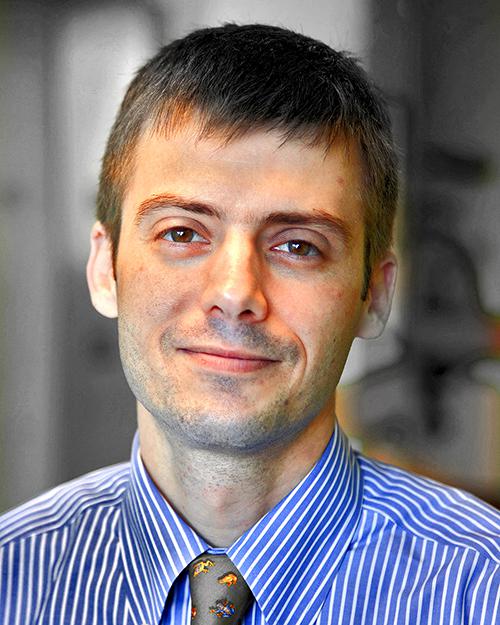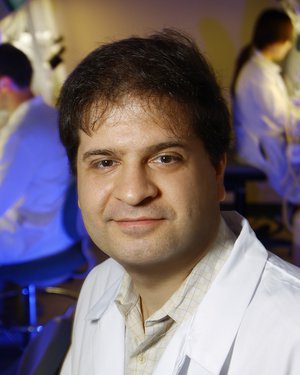-
Allen R. Chen, MD PhD MHS

Expertise: Cellular Therapy, Pediatric Medical Oncology, Pediatric Cellular Therapy
What Sets Us Apart
As one of the leading academic medical hospitals in the world, Johns Hopkins is at the forefront of pediatric blood and marrow transplantation (BMT) research and treatment. Our experienced hematology, oncology, and blood and marrow transplant experts are leading the way in new and advanced treatments for pediatric cancers and blood diseases.
-
The Johns Hopkins Pediatric Blood and Marrow Transplant (BMT) Program was one of the first in the United States and remains internationally recognized to this day for delivering exceptional survivor rates and long-term outcomes for children requiring blood or marrow transplantation.
-
Our pediatric BMT program is designated as a Children’s Oncology Group (COG) transplant center and is fully integrated into the nationally recognized adult bone marrow transplant program at the Sidney Kimmel Comprehensive Cancer Center at Johns Hopkins, a National Cancer Institute-designated comprehensive cancer center recognized by the National Marrow Donor Program (NMDP).
The combined program has also been accredited by the Foundation for the Accreditation of Cellular Therapy (FACT). We are committed to exceeding the highest standards of care to deliver the best possible outcomes for your child.
-
Johns Hopkins is one of only a few centers in the United States to offer leading-edge blood and marrow transplants for patients of all ages. Our multidisciplinary team of world-renowned blood and marrow (BMT) experts is dedicated to providing innovative care to people facing the fight of their lives—seamlessly from birth through adolescence and adulthood. Johns Hopkins doctors understand the unique circumstances of each and every child, and deliver a comprehensive care plan tailored to the disease type.
The Johns Hopkins Pediatric Blood and Marrow Transplant (BMT) Program has a keen focus on the unique medical and psycho-social challenges that face the adolescent and young adult population. At Johns Hopkins, children and young adults can be admitted and cared for at the Johns Hopkins Children’s Center up to age 25, before seamlessly transitioning to our integrated adult care.
Our program also collaborates with the Ulman Foundation, an internationally recognized organization dedicated to supporting adolescents and young adults with cancer. They provide a dedicated residence for young adults undergoing cancer treatment close to the Johns Hopkins Children’s Center. Johns Hopkins is one of only a few programs in the country that has a Ulman-sponsored patient navigator to further assist in supporting you and your child.
-
Traveling long distances to receive care for your child’s blood or marrow transplant procedure can feel overwhelming. That’s why we’re here to guide you through the journey. We coordinate medical treatment for patients and families at The Johns Hopkins Hospital and Johns Hopkins Children’s Center in Baltimore, Maryland in the United States, which are conveniently located near major domestic and international airports.
If traveling from outside the U.S., Dulles International Airport in Washington, D.C. offers non-stop international flights from over 50 cities, including Dubai, Abu Dhabi, Doha, Riyadh, Jeddah, Manama, Kuwait City and more.
-
Clinical care is delivered in The Charlotte R. Bloomberg Children’s Center on the main Johns Hopkins Hospital campus. The inpatient and outpatient units are in contiguous space on the 11th floor. Our inpatient unit includes 20 spacious, single patient rooms designed specifically for our oncology and blood or marrow transplant patients and is equipped with an air filtration system that allows children to leave their rooms as they are able. In addition to Johns Hopkins Child Life Services' play rooms and support activities, children also have access to a large recreation room that includes a half-size basketball court. Outpatient care is provided in an equally advanced clinic, conveniently connected to the inpatient unit.
-
Blood and marrow transplantation has a long (over 50 years) history at Johns Hopkins, beginning with Dr. George W. Santos (1909-2001), a physician-scientist who established the foundations and worldwide standards that would lead to bone marrow transplantation as we know it today. Since then, physicians at the Sidney Kimmel Comprehensive Cancer Center at Johns Hopkins and Johns Hopkins Children’s Center have been working together on developing and innovating transplant options and protocols to enhance the lives of children, adolescents, and young adults with a variety of cancers and non-malignant disorders of the blood, bone marrow and immune system. Our program is a leader in clinical care and research and remains committed to continuing to raise the standard of care for children undergoing a blood or marrow transplant.
Appointments and Referrals
Physicians calling after hours or on weekends may call the Hopkins Access Line (HAL) 24 hours a day, at 410-955-9444 or 1-800-765-5447, and ask for the pediatric oncology attending physician.
International Patients
Referral Coordinator (For patients in the United States)
Beta Thalassemia | Zayed’s Story
Zayed, a young boy from the United Arab Emirates, was diagnosed with the blood disorder beta thalassemia when he was just an infant. The family’s search for care led them to Johns Hopkins, where Zayed received a successful blood stem cell transplant.
Our Mission is simple: to make sure that every child in need of a blood or marrow transplant procedure has a suitable donor, and to minimize the toxicity and maximize the efficacy of our rigorous transplant protocols
Kenneth R. Cooke, MD., Director of the Pediatric Blood and Marrow Transplant (BMT) Program at Johns Hopkins
Treatments and Procedures
-
A blood or marrow transplant (BMT) procedure may be a treatment option for your child if they are facing:
· Acute and chronic leukemias
· Hodgkin and non-Hodgkin lymphomas
· High-risk solid tumors including Sarcomas
· Brain tumors
· Bone marrow failure syndromes,
· Inherited immune deficiency syndromes
· Hemoglobinopathies including sickle cell anemia and transfusion-dependent thalassemia
· Metabolic disorders
The Johns Hopkins Pediatric BMT Program has extensive experience using both myeloablative and reduced intensity conditioning regimens for allogeneic transplant procedures, followed by the delivery of blood stem cells collected from the bone marrow, placenta (umbilical cord), or peripheral blood of fully and partially matched related and unrelated donors.
As another novel approach to treatment, high-dose chemotherapy with autologous stem cell rescue is available as a tandem and non-tandem option for many solid tumors including but not limited to high-risk neuroblastoma, brain tumors along with relapsed or refractory germ cell tumors, and lymphomas.
-
While we offer BMT procedures using the full spectrum of donor types and stem cell sources, our program has championed the use of haploidentical, or “half-matched,” family donors for pediatric, adolescent and young adult patients with both malignant disorders and nonmalignant conditions such as sickle cell anemia, aplastic anemia, transfusion-dependent thalassemia, and a wide variety of immunologic disorders. This novel strategy has torn down traditional barriers to donor availability and facilitates patients in finding a suitable donor in an expeditious fashion, cutting the time to donor blood stem cell procurement from months to weeks .
Historically, children in need of a BMT procedure required a human leukocyte antigen (HLA) identical or “fully matched” blood stem cell donor. The best matched donor is usually a sibling, but only about 25% of children in need of a transplant will have a “fully matched” sibling donor. In addition, only approximately 30% of patients can find a perfectly matched unrelated donor in the national bone marrow and cord blood registries; and this percentage is much lower for minority groups, especially African Americans, Latino Americans, and individuals of middle eastern decent.
At the Sidney Kimmel Comprehensive Cancer Center at Johns Hopkins, we developed a unique method of using “half-matched” donors to ensure that every child in need of a BMT procedure has a donor that can be rapidly identified. A child inherits half of their genetic material from their mother and half from their father, meaning in almost every situation a parent can be the bone marrow donor, and 50% of siblings are half-matched too. This dramatically increases the number of patients who can successfully find a suitably matched donor and be transplanted. In haploidentical BMT, parents, siblings, and potentially aunts and uncles, nieces and nephews, half-siblings, and grandparents can safely serve as donors.
Johns Hopkins experts have performed more than 500 haploidentical transplants for adult and pediatric patients with safety and toxicity comparable to traditional transplants. This safety has made it possible for haploidentical BMT procedures to be used to treat many types of cancerous and non-cancerous pediatric diseases. -
The Johns Hopkins Pediatric BMT Program is also using blood stem cell transplantation from suitably matched donors to treat patients with non-malignant disorders of the blood, immune and metabolic systems. When possible, reduced intensity bone marrow transplant preparative regimens are used to minimize both short term and long-term side effects from chemotherapy and radiation therapy. When a “fully matched” donor is identified, we have protocols to minimize the amount and duration of immunosuppressive drugs that are needed after bone marrow transplant. This approach allows patients to come off their medication earlier and helps the immune system recover faster.
Non-malignant disorders we treat include, but are not limited to the following
· Severe Combined Immunodeficiency
· Chronic Granulomatous Disease
· Hyper-IgM syndrome
· CTLA4 deficiency
· Bare Lymphocyte syndrome types I and II
· Hemophagocytic Lymphohistiocytosis
· Severe Aplastic Anemia,
· Dyskeratosis Congenita
· Diamond-Blackfan Anemia
· Adrenoleukodystrophy
· Metachromatic Leukodystrophy
· Sickle Cell Disease
· Transfusion-Dependent Thalassemia
Blood and Bone Marrow Transplantation | FAQ with Dr. Kenneth Cooke
Research and Clinical Trials
-
The Sidney Kimmel Comprehensive Cancer Center at Johns Hopkins is a leader in the use of haplo-identical donors and the delivery of novel immune therapies for difficult to treat hematologic malignancies and solid tumors, placing the Johns Hopkins Bone Marrow Transplant program at the forefront of cancer treatment. “We have a platform at the Kimmel Cancer Center to deliver novel, immune cell-based therapies to our patients that will allow us to define the next generation of treatments, bringing transplant to a growing population of patients,” says Dr. Cooke. “The only way to break new ground is through well planned, carefully controlled translational research, and the Kimmel Cancer Center at Johns Hopkins provides a terrific environment for this to be successful.” Physician-scientists within The Johns Hopkins Pediatric BMT Program are both devoted clinicians and researchers who strive to optimize availability, maximize efficacy and decrease toxicity of the BMT procedure.
-
The Johns Hopkins Pediatric BMT Program currently has several open clinical trials for patients with acute leukemia, high risk solid tumors, severe aplastic anemia, and Immune deficiencies. Our established adolescent and young adult (AYA) program is built upon regular interactions between pediatric and adult oncology faculty in a variety of areas including BMT, hematologic malignancies, sarcomas, and brain tumors and ensures that our AYA have access to a broad scope of clinical trials. Moreover, our established collaboration with the Ulman Foundation ensures our AYA patients have access to additional support networks.
-
The Johns Hopkins Pediatric BMT Program is a leader in the use of haploidentical donors and the delivery of novel immune therapies for difficult-to-treat cancers, placing our BMT program at the leading-edge of cancer treatment.
Our experts are working on projects in the following areas:
- · Understanding the biology of regimen-related toxicities including liver and lung injury along with acute graft-versus-host disease (GVHD) in an effort to reduce the incidence and severity of this complications.
- · Overcoming traditional barriers to blood stem cell donor availability and optimizing the selection of the best possible available donor.
- · Developing strategies for post-transplant immunotherapy to prevent and/or treat relapse
- · Understanding the scope and pace of immune recovery after using haploidentical donors and post-transplant cyclophosphamide.
- · Developing novel BMT approaches to ultra-high risk (refractory or relapsed) solid tumors
- · Harnessing immune-modulatory and regenerative capacity of non-blood stem cells to reduce the development and severity of post-transplant complications like graft-versus-host disease (GVHD).
Bone marrow transplant isn’t just a procedure rather it represents an ongoing approach to care. The procedure itself is rather straightforward, but the provision of post-transplant care in the days, weeks, months, and years that follow absolutely requires a dedicated, well-trained group of practitioners
Kenneth R. Cooke, M.D., Director of Pediatric Blood and Marrow Transplant (BMT) Program at Johns Hopkins
Our Team
The Johns Hopkins Pediatric BMT Program team combines years of patient care experience, expertise in supportive care, transplant-related complications, and survivorship, with direct links to national cooperative groups.









